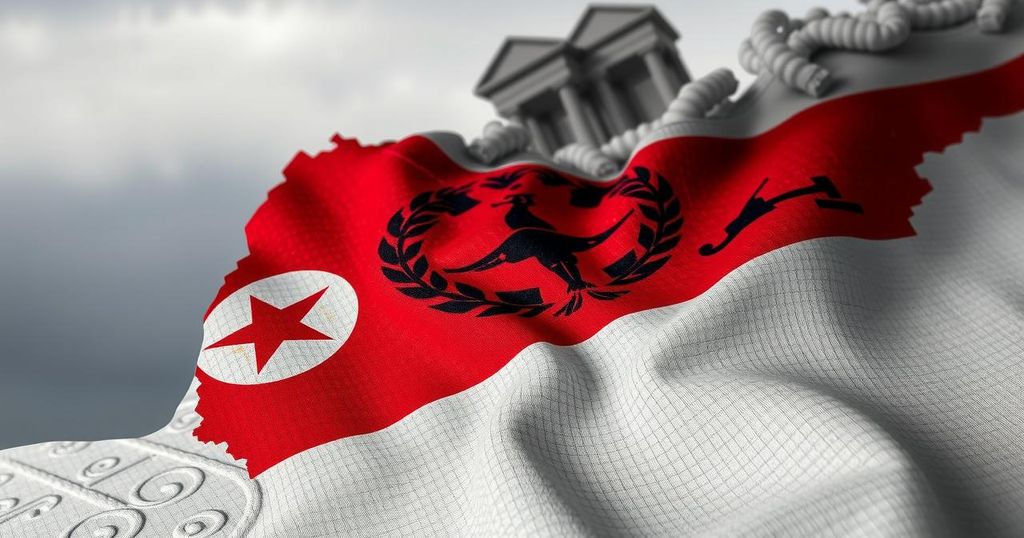Syria has witnessed the fall of the Assad regime, celebrated by citizens after over fifty years of authoritarian rule. Hayat Tahrir al-Sham’s (HTS) blitzkrieg led to the capture of Damascus, reigniting memories of the 2011 uprising. The Assad dynasty, characterized by corruption and oppression, is being replaced by HTS, which is navigating its own relationship with the populace and external powers. The future remains uncertain as various factions grapple with their roles in a new Syria amid complex geopolitical maneuvering.
The recent fall of the Assad regime in Syria has been met with widespread celebration among the populace, marking a significant shift after decades of dictatorial rule under Bashar al-Assad. His departure from Damascus to Russia followed a rapid offensive by Hayat Tahrir al-Sham (HTS), an Islamist group, which culminated in the capture of the capital. This event revives memories of the 2011 uprising, which was ruthlessly quelled by Assad’s regime through violent repression and civil war, prompting various foreign interventions. Post-capture, HTS supporters stormed key government edifices, illustrating the regime’s collapse and the public’s desire for a new beginning.
The Assad regime, rooted in the socialist rhetoric of the Ba’ath party, was characterized by systemic corruption and authoritarianism, particularly under General Hafez al-Assad and subsequently his son. Despite early socialist undertones, the regime increasingly shifted to neoliberal policies that favored a small elite, intensifying socio-economic divisions. In March 2011, the public’s call for reform ignited protests that faced brutal governmental oppression, reinforcing sectarian divides and propelling the country toward civil war as opposition factions emerged.
HTS, originally founded as Jabhat al-Nusra, evolved into a significant faction that aligns with nationalist objectives within Syria, contrasting with broader jihadist ambitions. As HTS solidifies its power in northwest Syria, it has garnered control over public services, though dissent remains against its governance. Relations with external powers, including Russia and Iran, have fluctuated, especially following Assad’s fall, presenting an uncertain future in a region marked by complex geopolitical interests.
The implications of Assad’s fall extend beyond Syria, affecting regional dynamics, particularly with Iran assessing its support for the regime and Turkey recalibrating its strategies in relation to Kurdish forces. The situation in Israel and Palestine is also poised to change, with Israel seeking to exploit the instability in Syria for its strategic advantages. Kurdish autonomy remains precarious, as local forces navigate relationships with HTS while seeking to maintain their territorial control.
In summary, this pivotal shift marks a historic moment for Syria, raising questions about its future governance, the role of imperialist interests, and the enduring challenges faced by various social groups, particularly the Kurds. The success of the revolution’s ideals for a democratic and inclusive Syria now rests on the ability of these factions to unify and resist external domination while pushing for greater autonomy and rights for all communities involved.
This article discusses the recent political upheaval in Syria following the fall of the Assad regime, which had ruled with an iron fist for over fifty years. The analysis explores the rise of Hayat Tahrir al-Sham (HTS) and the broader implications of this shift for the Syrian civil war, regional stability, and the socio-economic conditions within Syria. It also examines the historical context of the Assad regime’s governance, the 2011 Syrian revolution, and the intricate relationships among various domestic and foreign actors following the regime’s collapse.
The fall of Assad’s regime has initiated a new chapter in Syria’s protracted struggle for freedom and representation. While the immediate response from the populace is one of relief and celebration, the road ahead is fraught with challenges involving power dynamics, the fight for Kurdish rights, and managing external influences. The international community’s responses and the internal unity among Syrian factions will ultimately shape the future governance of Syria and the realization of democratic aspirations.
Original Source: socialistworker.co.uk






